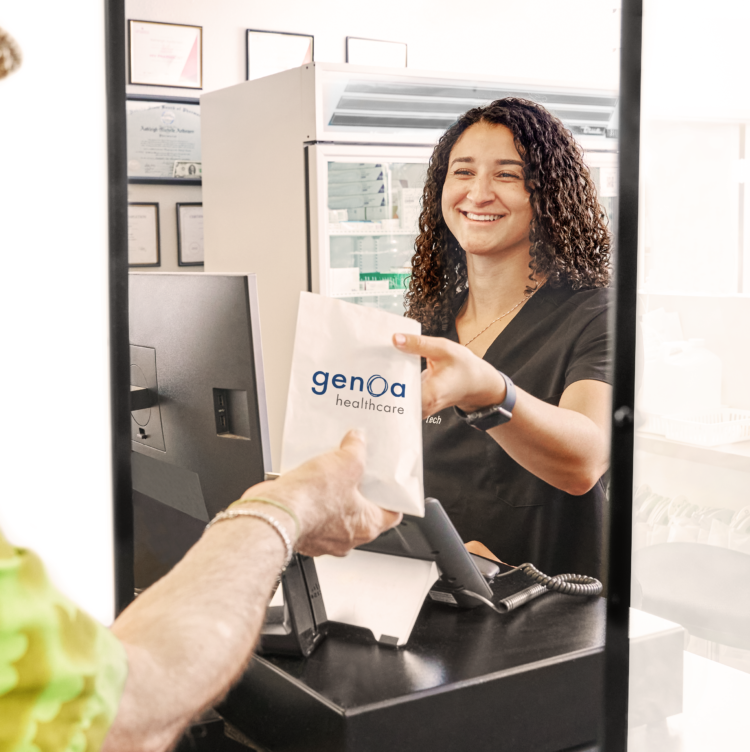By Mubeen Malik, Vice President, Telepsychiatry Operations, Genoa Healthcare
Medication-assisted treatment (MAT), or the combination of behavioral therapy and medications, is a powerful tool for communities wrestling with substance abuse such as opioid addiction. In many of these communities, Community Mental Health Centers (CMHCs) play an important role in providing care that otherwise wouldn’t be accessible, particularly for underserved populations. Many centers however face resource challenges, including finding providers who can treat patients through MAT.
One solution that has emerged is the use of TeleMAT which enables providers to treat patients remotely through a secure, HIPPA-compliant video platform. Through TeleMAT, patients receive timely, quality care directly within their local health care center. TeleMAT programs are flexible and can be customized based on individual patient needs, and are often used in tandem with in-person services or as a standalone practice. Three of the most prevalent TeleMAT models include[1]:
- Telemedicine for all care, including the induction, stabilization, IOP and follow-ups
- In-person physician prescribing and patient medication monitoring, paired with counseling taking place over telemedicine; and
- Telemedicine prescribing with follow-ups and counseling done in person.
Genoa Healthcare, a leading pharmacy and telepsychiatry provider serving the behavioral health community, has become a leader in TeleMAT care delivery. Since 2018, Genoa Healthcare Telepsychiatry has built eight TeleMAT programs within community mental health centers across the U.S. serving more than 850 patients. Based on our clinical and operational experience to date, we’ve identified key challenges faced when building a TeleMAT program and the solutions needed to ensure a successful implementation.
CHALLENGES
The provider’s remote location can create a number of challenges for health centers that are planning to add a virtual component to their MAT programs. The more common challenges include:
- Patient and provider scheduling/utilization: The MAT patient journey involves touchpoints across a number of different care team members, including nurses, providers, case managers, social workers and therapists. The clinic must schedule a patient based on 1) where the patient currently is in the treatment process and 2) the availability of the provider most appropriate to treat the patient.
- Integrated communication: Given the high number of touchpoints along the MAT patient journey, centralizing information and creating open communication channels across the care team is crucial. The provider’s remote nature creates additional logistical considerations around availability and communication that should be addressed.
SOLUTIONS
Program success requires an appropriate level of integration and collaboration within a patient’s care team. Successful TeleMAT programs preserve a foundation in which providers and clinical teams approach patient care holistically, understanding the complexities of each person’s needs and circumstances.
It is difficult to build TeleMAT programs that sufficiently address these challenges, so it is often most effective to partner with a telehealth company. The best telehealth companies will have experience building and sustaining telehealth programs across a number of different communities and markets, enabling them to borrow practices that create a best-in-class experience for the patients, clinics and providers. The best telehealth companies will consider the following dimensions in their programs:
- Strong education for all parties on federal, state and local regulations, reimbursement, and operations.
- Sustainable clinic/provider partnerships that are built around treatment philosophy, cultural fit, familiarity with patient demographics, and receptiveness to each other’s workflows and process.
- Integrated workflows that centralize information and create communication channels and standard processes between the remote provider and onsite team.
- Active program management that proactively monitors and works to improve the performance of the TeleMAT program through various operational, financial and clinical value-additive services.
As overdose rates continue to climb in underserved communities and limited provider access prevents patients from receiving care, TeleMAT provides necessary treatment more often and more regularly for those who need it. TeleMAT is proving to be a powerful tool available to those communities, as it significantly increases access to behavioral health care providers, and ultimately helps more people in need receive care faster.
[1] How Is Telemedicine Being Used In Opioid And Other Substance Use Disorder Treatment? Health Affairs, December 2018, 37:12. Haiden A. Huskamp, Alisa B. Busch, Jeffrey Souza, Lori Uscher-Pines, Sherri Rose, Andrew Wilcock, Bruce E. Landon, and Ateev Mehrotra





